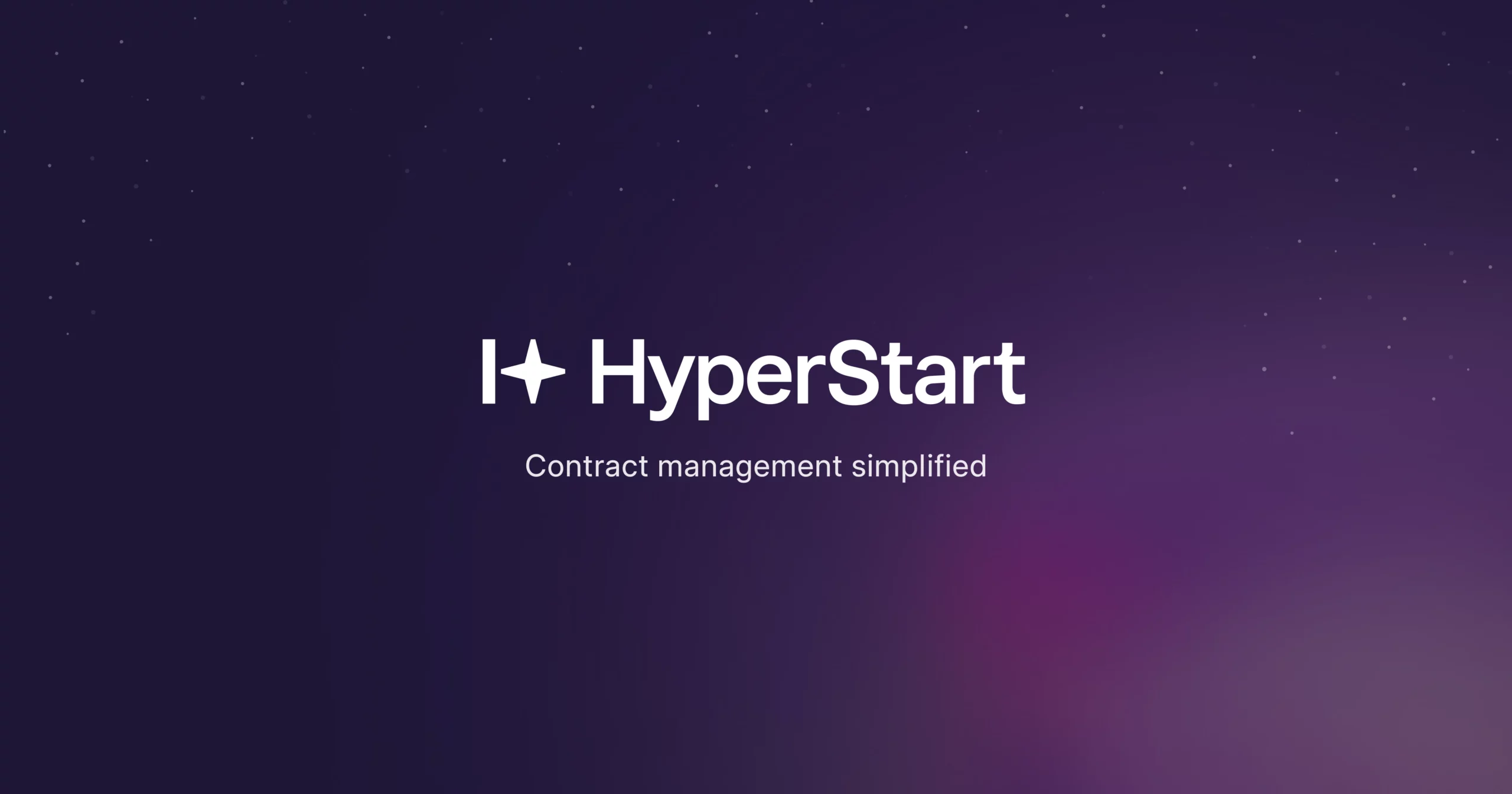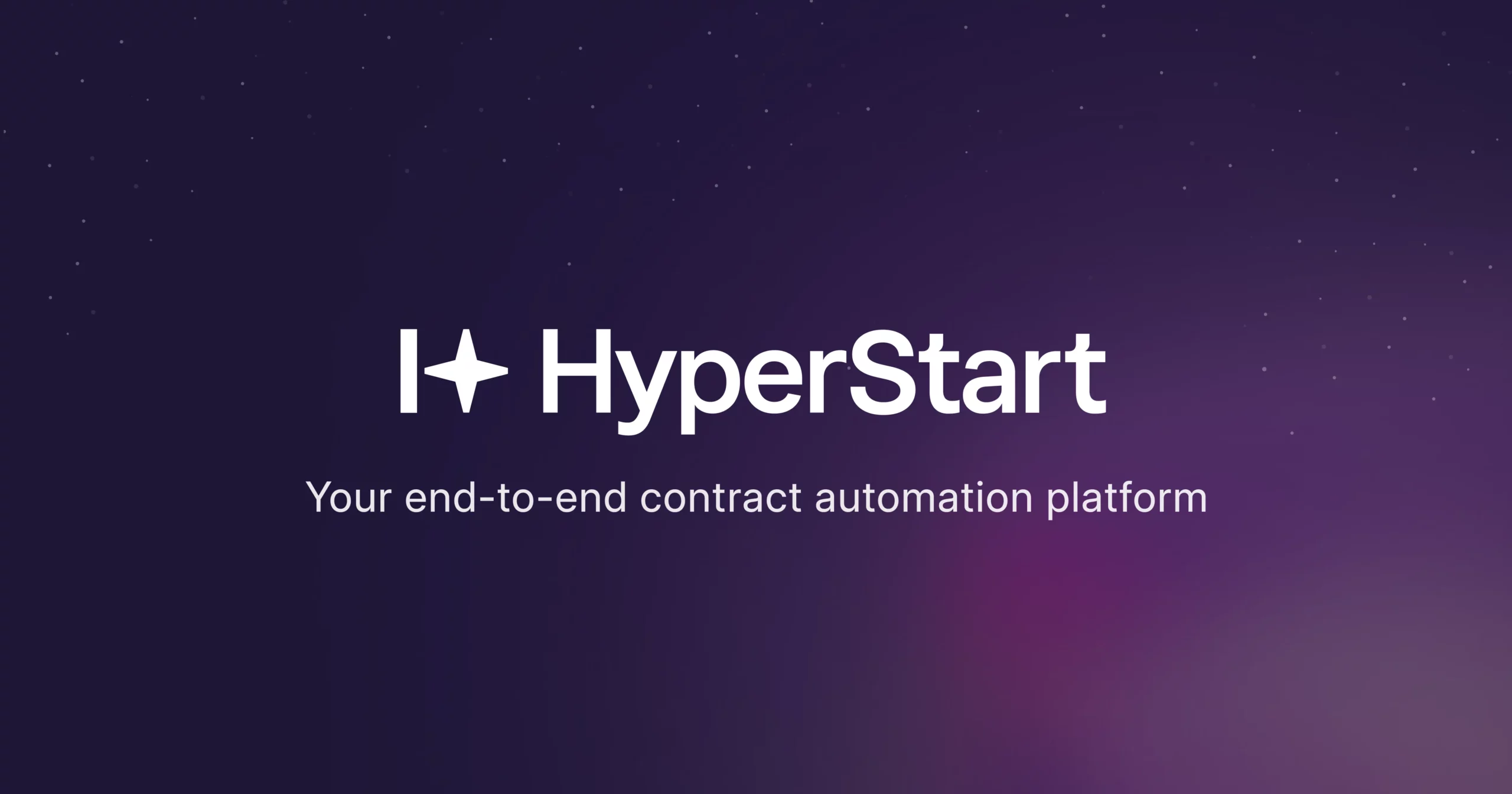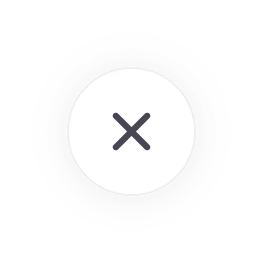Procurement contracts are fundamental to successful supplier relationships, yet in many organizations, managing them effectively remains a challenge. These critical documents are often fragmented across various systems, buried in inboxes, spread across numerous spreadsheets, or simply overlooked until a problem arises.
If you’re a procurement manager handling a large number of vendor relationships, you’ve likely encountered difficulties such as missing key clauses during disputes, being caught off guard by auto-renewals, or struggling to ensure supplier accountability. These issues highlight the need for a more structured approach.
That’s where procurement contract management steps in, not just as a legal formality. But, as a strategic tool to control costs, reduce risk, and enforce vendor accountability.
According to Gartner, by 2027, 50% of procurement contract management activities will be AI-enabled, up from just 15% in 2024. Manual processes are being replaced by more intelligent, automated workflows that reduce risk and accelerate performance.
This shift is driving more teams to adopt purpose-built procurement contract management software, designed to centralize contracts, automate workflows, and improve visibility across suppliers, obligations, and KPIs.
At HyperStart, we blend insights from legal, sales, product, customer success, and beyond to streamline contract operations. This guide combines best practices, tools, and real-world insights we’ve gathered from working with diverse teams.
What is procurement contract management?
Procurement contract management is the process of creating, executing, and overseeing contractual agreements between your organization and its suppliers or vendors.
It ensures that key contract data, from pricing and delivery timelines to compliance terms, is tracked, enforced, and optimized throughout its lifecycle.
That includes everything from onboarding a new logistics partner to renegotiating terms with a long-term vendor, and ensuring those terms are met.
Done right, procurement contract management leads to:
- Significant cost savings
- Improved supplier performance
- Less room for contract disputes
Whether you’re sourcing raw materials, IT services, logistics support, or equipment, each supplier relationship relies on clearly defined contract terms. Effectively managing those contracts defines strong contract management in the procurement industry.
Why is contract management important for modern procurement teams?
If done well, contract management can streamline operations, reduce costs, and improve vendor accountability. Poor management can cause legal headaches, lost savings, and broken supplier trust. Let’s explore why effective contract management is essential for modern procurement teams.
1. Protects against risk and ensures compliance
Every contract must meet internal policies and external regulatory requirements. Whether it involves data privacy, delivery obligations, or payment terms, oversight can lead to legal risk, break operations, or drain spending.
This is why contract compliance must be built into every stage from contract creation to execution. A contract management system helps procurement professionals:
- Ensure all clauses meet legal and regulatory standards
- Track contractual obligations across departments and vendors
- Avoid non-compliance penalties through automated monitoring and alerts
For organizations operating across regions or industries, having structured contract lifecycle management is no longer optional; it’s a shield against legal disputes and operational disruptions.
2. Helps you control spending and avoid cost leakage
Your negotiation potential is locked in contracts. But without proper tracking and follow-up, those savings opportunities often evaporate due to pricing variances, missed milestones, unfavorable terms, or overlooked renewals. A lack of visibility into supplier contracts could mean you’re leaving money on the table.
A mature supplier contract management process enables procurement teams to:
- Monitor supplier billing and match it with agreed terms
- Track volume discounts, rebates, and penalties
- Set renewal alerts to renegotiate contracts before they auto-renew
By digitizing this procurement process using contract management software, teams gain greater control over procurement budgets and unlock measurable cost savings across categories.
Fragmented systems and inconsistent supplier agreements mean organisations struggle to unlock the full value hidden in their data… Proactive alerts and insights help businesses renegotiate expiring contracts on favourable terms, avoiding last-minute renewals at suboptimal rates.
3. Improves supplier performance and accountability
Contracts define the rules of engagement with your suppliers, but they’re only effective if those rules are tracked and enforced. When contracts are scattered across inboxes or folders, it becomes difficult to monitor if vendors are truly delivering on expectations.
With a centralized contract repository and integrated performance monitoring, procurement teams can:
- Track supplier KPIs like delivery time, quality, and responsiveness
- Set up automated workflows for non-compliance alerts
- Quickly identify underperformance and take corrective action
This creates a culture of accountability where suppliers understand that contractual agreements are not just formalities; they are metrics to be measured.
4. Eliminates operational bottlenecks
Manual contract management is slow, inconsistent, and prone to delays. Drafts sit in inboxes. Approvals take weeks. Teams lose time chasing updates or duplicating efforts. These inefficiencies cost more than time, they impact your ability to execute strategic procurement goals.
Automated contract management workflows and digital tools bring structure and speed to the procurement process. These tools allow procurement teams to:
- Route contracts to the right stakeholders automatically
- Reduce manual data entry and human error
- Keep all contract-related communications in one place
By managing the entire contract lifecycle digitally from renewal request, procurement teams move faster, make smarter decisions, and keep projects on track.
5. Strengthens internal collaboration
Procurement contracts don’t operate in isolation. Legal, finance, IT, and business units all play a role in reviewing, approving, and executing supplier agreements. Without structured collaboration and comprehensive audit logs, you’re prone to miscommunication.
A well-implemented contract management system fosters:
- Open and transparent communication between departments
- Real-time access to contract status, audit history, versions, and edits
- Clear visibility into roles, tasks, and timelines
6. Enables data-driven decision-making
You can’t lead predictably successful procurement operations with intuition. You need data-informed insight. The data locked inside contracts can reveal patterns in supplier performance, pricing trends, and compliance risks. But if contracts aren’t managed properly, this valuable information is inaccessible.
Modern contract lifecycle management software offers:
- Dashboards that highlight upcoming renewals, obligations, and KPIs
- Reports on contract value, savings, and risk exposure
- Integration with ERP or sourcing tools for better forecasting
With access to the right contract data, procurement teams can make faster, more informed decisions that support long-term strategy.
Every contract should follow a transparent, repeatable process that ensures compliance, cost control, and supplier accountability across the full lifecycle.
To stay consistent and scalable, the process must be divided into two key stages: Pre-award and post-award.
Pre-award
Everything leading up to the contract being signed:
- Contract drafting using pre-approved templates and clause libraries
- Contract negotiation with vendors and AI-redlining with fallback clauses for pricing, timelines, and SLAs
- Internal reviews by legal and finance for legal compliance and budgeting
- Routing the contract through automated workflows for approvals
Post-award
Everything that happens after the contract is signed:
- Securing eSignatures
- Ongoing performance monitoring and risk assessment
- Tracking key performance indicators (KPIs) and vendor obligations
- Managing contract renewals, extensions, or terminations
All of this needs to happen in a timely, accurate, and compliant manner. When you’re dealing with hundreds or thousands of vendor contracts, things can get messy fast—unless you have a system in place.
The 6 stages of the procurement contract lifecycle
Let’s walk through the key stages of the procurement contract lifecycle. We’ll highlight what happens at each step, who’s involved, and how teams can improve outcomes using modern contract management software.
1. Know what you need and why
Every procurement contract starts with a clear need, whether it’s sourcing a new vendor, onboarding a long-term supplier, or renewing an existing agreement. At this stage, procurement professionals collaborate with internal departments to define the need, the objectives, and how it will be sourced.
This phase involves:
- Gathering requirements from stakeholders
- Setting a timeline and budget
- Outlining contract objectives and potential risks
- Performing early risk management assessments
Failing to properly plan can lead to misaligned expectations, delays, and compliance issues. Frameworks for needs assessment can be useful.
2. Get the terms down on paper
Once the procurement need is defined, the contract moves into the contract drafting phase. Here, procurement teams or legal departments begin structuring the agreement using either pre-approved templates or drafting from scratch.
A well-drafted contract should cover:
- Scope of work and deliverables
- Commercial terms, pricing, and payment schedules
- Key contractual obligations and responsibilities
- Terms for dispute resolution and termination
Many organizations use contract lifecycle management software to access clause libraries, standardize language, and eliminate inconsistencies. This reduces reliance on manual processes and minimizes human errors.
3. Get everyone on board
When we have a tentative agreement, the contract undergoes internal review and approvals. This step ensures the contract complies with legal standards, financial policies, and organizational risk thresholds.
Departments involved typically include:
- Legal (for compliance and liability checks)
- Finance (for budget validation)
- Procurement (for alignment with sourcing goals)
Without automation, this stage can be time-consuming, especially when multiple stakeholders need to provide input. Automated workflows within contract management systems streamline this step by routing the contract to the right reviewers, setting approval deadlines, and ensuring a centralized view of all contract-related communications.
4. The negotiation song and dance
After drafting, the contract enters negotiation. This is where both parties, the procurement team and the supplier, review the terms and align on a deal that meets their mutual interests.
Common areas of negotiation include:
- Delivery schedules and service-level agreements (SLAs)
- Contract terms related to risk, liability, and warranties
- Performance metrics and expected supplier management outcomes
Negotiation is about ensuring clear expectations, managing risk, and building a foundation for a long-term supplier relationship. By using digital tools that support contract redlining, version tracking, and real-time collaboration, organizations shorten negotiation cycles and reduce communication gaps.
5. Sign off
After receiving internal approvals, the contract is ready for execution. Depending on organizational policy and jurisdiction, contracts may be signed physically or digitally.
Modern execution methods include:
- eSignatures for quick, safe, and traceable contract execution
- Timestamped digital signatures for legal compliance
- Storage of final contracts in a centralized contract repository
Delays at this stage can derail procurement timelines. With contract management tools that automate reminders, approvals, and signature capture, procurement teams can significantly improve contract turnaround time and move swiftly into the performance phase.
6. Renew, Amend, or Part Ways
As a contract nears its end, procurement teams must decide what’s next: should it be renewed, amended, or ended?
This decision is based on:
- Supplier performance and delivery track record
- Budget impact and cost savings achieved
- Business needs or changes in market conditions
If the relationship has been productive, the contract may be renewed. If not, it might be terminated or renegotiated. Either way, it’s critical to evaluate contract value, update records, and ensure proper documentation for audit readiness and compliance.
Close faster without the email back-and-forth
Cut delays and keep projects on the move with HyperStart’s eSignature and approval workflows. Book a demo
Book a DemoComparing manual vs automated procurement contracting
Let’s break down the differences between manual and CLM-automated procurement contract management processes.
| Stage | Manual Process | CLM-Automated |
| Contract Request | Email requests with inconsistent formats | Structured intake forms with conditional logic |
| Contract Drafting | Copy-pasting from old Word documents; version confusion | Template-based contract creation with pre-approved clauses |
| Contract Negotiation | Lengthy back-and-forth emails; poor visibility into changes | Centralized platform with redlining, approvals, and open and transparent communication |
| Contract Review | Manual review across departments; delays in feedback | AI-redlining with precedent clause suggestions |
| Contract Execution | Wet signatures or disconnected eSignature tools | Built-in eSignature integrations for fast, secure contract execution |
| Performance Monitoring | Manually scheduled vendor check-ins; missed obligations deadlines | Real-time contract obligation monitoring and automated alerts |
| Contract Renewals | Risk of contract expiry or untracked auto-renewals | Renewal alerts, performance insights, and risk management recommendations |
| Audit & Compliance | Scattered files and incomplete contract documentation | Centralized contract repository with audit logs, version history, and searchability |
Manual contract handling doesn’t just delay procurement timelines, it creates blind spots. Missed obligations, outdated clauses, and poor version control can lead to:
- Legal disputes
- Failed audits
- Financial penalties
- Damaged vendor relationships
- Automate repetitive tasks
- Reduce legal and financial risk
- Ensure contract compliance
- Gain visibility into every step of the contract process
Challenges in procurement contract management (and how to solve them)
Next, we break down the common pain points of contract management in procurement and how modern CLMs solve them.
Challenge 1: Contracts are scattered everywhere
You need a specific contract fast. You click through folders, dig through emails, and maybe even remember seeing a Slacked someone privately. Relying on scattered documents, manual routing, and hoping for the best is not sound. You lose time, lose track of versions, and open the door to mistakes.
Solution:
Implement a centralized contract repository solution with search, filters, and version control. Platforms like HyperStart store every contract, comment, and edit in one secure place — instantly accessible to anyone with permissions.
Challenge 2: Missed deadlines and renewal dates
Auto-renewals quietly drain money if contracts are forgotten. Manual trackers and calendar reminders often fail to notify teams in time to renegotiate, cancel, or assess performance.
Solution:
Modern contract management software is your traffic control for deadlines. Set up automated alerts and notifications for all those crucial contract dates. Your system will ping the right people well in advance, giving you ample time to review and renegotiate before that auto-renewal pops up.
Challenge 3: Limited visibility into contract data
Your contracts contain valuable information – vendor details, pricing, performance history, and risk factors. But their full potential remains untapped when manually tracked on spreadsheets. Manually performing audits, analyzing risk, or planning strategically is like trying to fly a plane while learning how to fly it.
Solution:
Use a CLM platform with smart metadata tagging and reporting dashboards. HyperStart auto-extracts metadata and turns your repository into a searchable strategic asset with filters like contract value, expiry date, risk, and liability.
Challenge 4: Ineffective performance monitoring
You can’t manage what you can’t measure. Supplier accountability is nearly impossible without a system to track delivery timelines, service levels, and KPIs.
Solution:
Leverage contract management software with built-in performance monitoring features. The system can automate SLA tracking and even flag potential risk indicators based on performance deviations. It’s like having a dedicated performance analyst for every single contract, giving you the data you need to manage suppliers effectively.
Challenge 5: Legal and compliance risks
Inconsistent templates, missing clauses, or outdated language can expose your business to legal and regulatory issues. When drafting manually, it’s easy to overlook critical compliance requirements.
Solution:
Use pre-approved clause libraries, enforce version control, and automate compliance checks throughout the drafting process. Tools like HyperStart ensure legal documentation always meets compliance requirements.
Challenge 6: Fragmented communication between stakeholders
Getting procurement, legal, finance, and operations on the same page with a broken contract management process Emails get lost, feedback is delayed, and the whole procurement process grinds to a halt.
Solution:
CLM platforms are designed to be the central nervous system for contract-related communication. They provide a shared workspace where all stakeholders can view, comment on, edit (with permissions), and approve documents in one place. This centralizes the conversation, ensures everyone can access the latest information, and keeps the contract management process flowing smoothly and transparently.
Auto-renewals draining your budget?
Let HyperStart handle the reminders. Get alerts before contracts expire, so your team always has time to renegotiate or cancel. Book a demo
Book a DemoProcurement contract management best practices: Setup checklist
Below is a checklist-style breakdown of best practices that your procurement team can follow to build a scalable and effective contract management process.
Implementation checklist
How HyperStart CLM helps procurement teams
Built for speed, compliance, and collaboration, HyperStart gives procurement teams everything they need to manage contracts in one centralized platform from drafting and negotiation to execution and renewal.
Here’s how HyperStart CLM empowers procurement professionals:
| Capability | What it does | Proven impact |
| Contract Creation & Review | Auto-generates contracts using templates, suggests compliant clauses, and flags risky language during contract review | 2 min to create contracts |
| Approval Workflow Automation | Automates multi-level approval routing, seamless eSignatures, and automates alerts with In-Flight process tracking | 80% faster contract turnaround |
| Centralized Contract Repository | Stores all contracts, clauses, and versions in one searchable, secure system with smart filters and role-based access | 2 sec contract retrieval with AI |
| Contract Performance Monitoring | Tracks SLAs, obligations, and delivery milestones; provides alerts for missed deadlines or potential disputes | 70% time saved on contract admin |
With built-in automation, AI-powered reviews, auto-extraction of metadata, intelligent alerts, and real-time visibility, HyperStart helps your procurement team streamline contracts, reduce admin time, and make faster, more confident decisions.
Bring procurement, legal, finance, and operations into one platform with alerts, comments, and audit history.
Get a personalized walkthrough of how HyperStart CLM can help your team save time, reduce risk, and manage contracts at scale. Book a demo.












